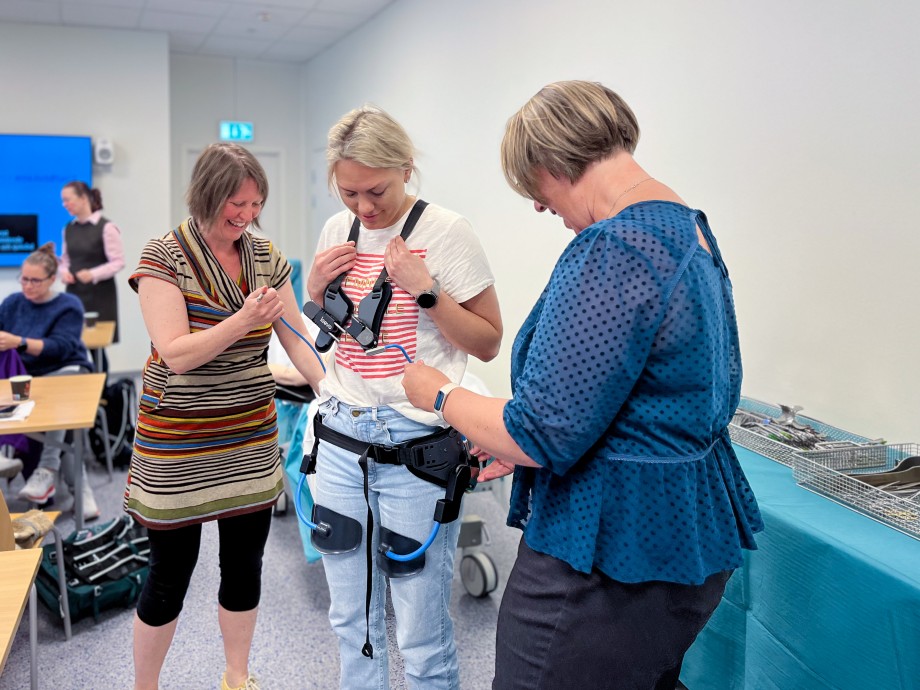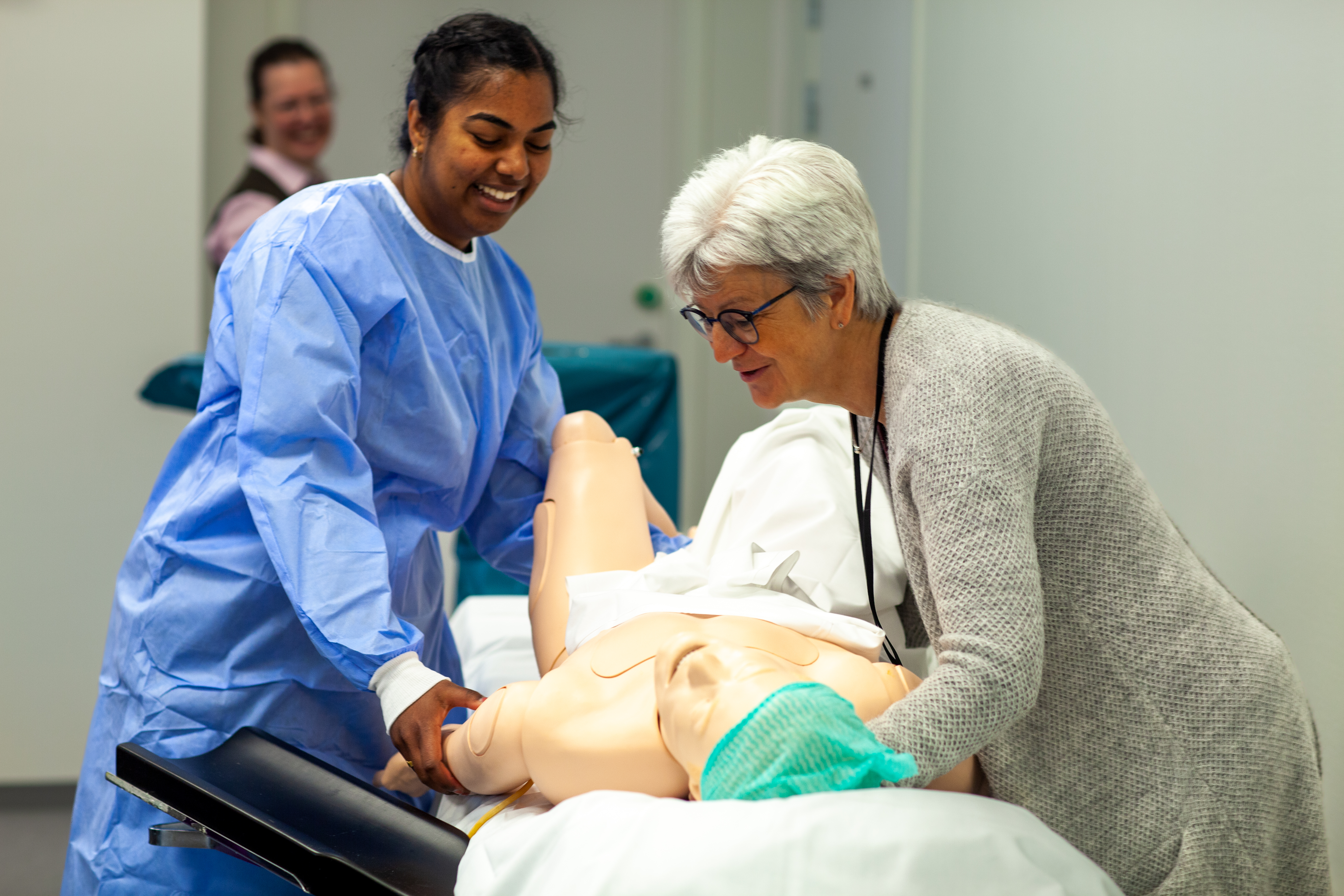Students and researchers at UiS are convinced that exoskeletons can be a useful aid for operating room nurses during long operations.

Under the auspices of the Caring Futures research project at UiS, a workshop was recently held for master's students in surgical nursing, with invited guest lecturers from the University of Tampere, Finland.
– Our aim was for the students to have the opportunity to acquire research-based knowledge about ongoing challenges with the introduction of new technology in care practices, says Dr. Ingvil Hellstrand.
Dr. Hellstrand is a researcher and work package lead in Caring Futures. She kicked off the workshop by presenting the Caring Futures project to the students. The project critically analyses how increased use of technology in the health and care sector can change one’s understanding of what constitutes “good” care.
Care technology in healthcare services
Dr. Tuuli Turja and Dr. Anna Kork, both from the University of Tampere, began their lecture by talking about how social robots and other care technologies are entering the healthcare system at full speed.
Turja presented her research on healthcare personnel's attitudes to technology. This reveals mostly positive attitudes, especially among those who feel they possess the competence to use it properly. She pointed out that attitudes towards technology are "contagious" – positive attitudes and environments create a culture geared towards adoption of technology.
The workshop was centred around the exoskeleton – a portable technology that aids with heavy lifting, thereby supporting and relieving strain on the back.
Drs. Turja and Kork have conducted a pilot project with exoskeletons which was aimed at nursing staff. The findings reveal that nurses weren’t entirely sold on the benefits of the exoskeleton. It was a useful tool in a given situation but taking it on and off proved to be a lot of work.
Testing the exoskeleton

During the workshop, students tried on the exoskeleton to see how it felt and to assess whether it was a handy tool. The exoskeleton must be adjusted for everyone. This resulted in some time spent testing the exoskeleton on each student so that they could experience the best possible effect.
– You put it on like a vest, which fastens over the chest and hips to stabilize the body in a kind of frame. There are also two braces against which you can rest, on the front of the thighs, Hellstrand explained.
Portable exoskeletons can be used under scrubs in the operating theater to support and relieve strain on the body.
– Many thought it felt unusual, they felt like they were walking stiffly – like a robot! But several reported that it provided good support, and that it would enable them to rest or chill, as they said, when they had to stand for several hours straight during an operation, she added.
Avoiding injury and physical degeneration
– This will definitely be useful for operating room nurses, says Irene Sirevåg. Sirevåg is a doctoral candidate at UiS with extensive experience as an operating room nurse.
She is candid about a profession with high physical work demands, which over time can cause back problems, amongst other things.
– As an operating room nurse, you are exposed to a substantial physical load as you must lift heavy and stand upright during long operations. Tools like the exoskeleton will allow the nurse take better care of herself and her own health and bring ease to the heavy work, she states.
Hellstrand found it interesting to compare the specific benefits for operating room nurses with findings from Turja's previous research.
– Several workshop participants agreed that the exoskeleton could be useful to wear during long operations, she concluded.
Jeg ser tydelig at dette vil være nyttig for operasjonssykepleiere, sier Irene Sirevåg som har lang erfaring fra yrket, og er nå doktorgradsstipendiat i operasjonssykepleie ved UiS.